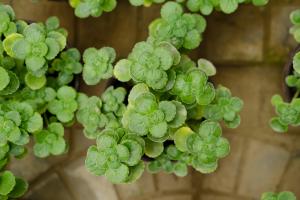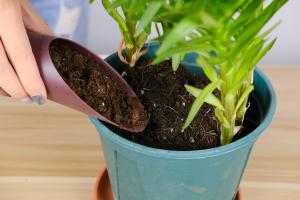How to Plant Ginkgo Tree Bare Root
Ginkgo tree (Ginkgo biloba) is a unique and ancient species that can add a touch of history and beauty to any garden or landscape. Planting a bare-root ginkgo tree is a great option as it can save you money and allow you to choose from a wider variety of plant sizes and shapes. However, planting a bare-root ginkgo tree requires patience, care, and a bit of gardening knowledge. In this guide, we will walk you through the step-by-step process of planting a ginkgo tree bare root.
Step 1: Choose the Right Location
The first step in planting a ginkgo tree is selecting the best spot for it. Ginkgo trees prefer full sun, but they can tolerate partial shade. Ideally, choose a sunny spot with well-draining soil that is not too wet or too dry. Keep in mind that ginkgo trees are slow-growers, so make sure to give them enough space to reach their full potential.
Step 2: Prepare the Soil
Ginkgo trees prefer well-drained, loamy soil that is slightly acidic, with a pH between 5.5 and 7. If your soil is too compact or too sandy, consider amending it with organic matter, such as compost or well-rotted manure. Dig a hole that is at least twice the width of the root system and deep enough to accommodate the plant's roots.
Step 3: Soak the Bare Root
Before planting, soak the bare-root ginkgo tree in water for about 24 hours to rehydrate the roots. This will ensure that the tree has enough moisture to survive in its new environment. If you cannot plant the tree right away, wrap it in damp burlap or moist sawdust and store it in a cool, shaded spot.
Step 4: Plant the Bare Root Ginkgo Tree
Place the bare-root ginkgo tree in the prepared planting hole, making sure that the top of the root ball is level with the surrounding soil. Backfill the hole with a mixture of the soil and the organic matter you added earlier, tamping down gently to remove any air pockets. Water the tree thoroughly to settle the soil around the roots.
Step 5: Mulch and Water
Add a layer of organic mulch, such as wood chips, leaves, or straw, around the base of the tree, but not touching the trunk. This will help to retain moisture, suppress weeds, and regulate soil temperature. Water the tree deeply and regularly, especially during the first growing season, to keep the soil moist but not waterlogged.
Step 6: Prune and Maintain the Tree
Pruning is not necessary for ginkgo trees, but you may want to remove any damaged or dead branches to maintain the tree's shape and health. Ginkgo trees are hardy and require little maintenance once established, but you may want to fertilize lightly in spring or fall with a balanced fertilizer to encourage new growth.
In conclusion, planting a ginkgo tree bare root requires a bit of effort and patience, but the results can be rewarding. By following these simple steps, you can give your ginkgo tree the best possible start in life, and enjoy its beauty and history for many years to come.

 how many times do yo...
how many times do yo... how many planted tre...
how many planted tre... how many pine trees ...
how many pine trees ... how many pecan trees...
how many pecan trees... how many plants comp...
how many plants comp... how many plants can ...
how many plants can ... how many plants and ...
how many plants and ... how many pepper plan...
how many pepper plan...






























